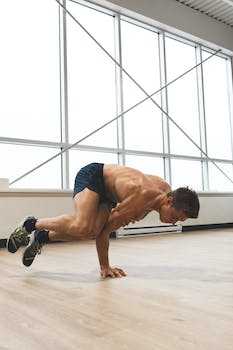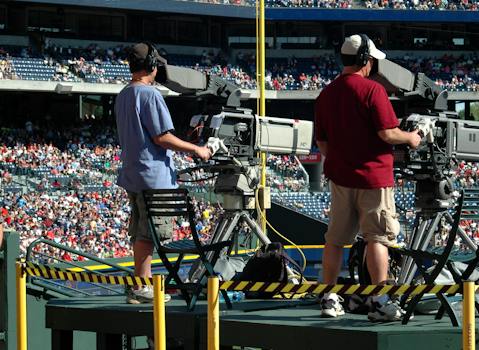

-
Table of Contents
Unleash Your Potential: Optimize Your Athletic Performance
Introduction
Introduction: Maximizing athletic performance is a goal shared by athletes across various sports disciplines. To achieve peak performance, effective training strategies play a crucial role. These strategies encompass a range of factors, including proper nutrition, tailored workout routines, adequate rest and recovery, and mental preparation. By implementing these strategies, athletes can optimize their physical abilities, enhance their skills, and ultimately perform at their best on the field, court, or track.
The Importance of Periodization in Athletic Training
The Importance of Periodization in Athletic Training
When it comes to maximizing athletic performance, effective training strategies are essential. One such strategy that has gained significant recognition in recent years is periodization. Periodization is a systematic approach to training that involves dividing the training program into distinct phases or periods, each with a specific focus and goal. This method has been widely adopted by athletes and coaches across various sports disciplines, and for good reason.
One of the primary reasons why periodization is so crucial in athletic training is its ability to prevent overtraining and reduce the risk of injury. By structuring the training program into different phases, athletes can vary the intensity, volume, and type of exercises they perform. This variation allows for adequate recovery and prevents the body from becoming overwhelmed by excessive stress. It also helps to address any muscle imbalances or weaknesses that may exist, further reducing the risk of injury.
Another significant benefit of periodization is its ability to optimize performance gains. By strategically manipulating training variables such as intensity, volume, and rest periods, athletes can target specific physiological adaptations that are necessary for their sport. For example, during the preparatory phase, the focus may be on building a solid foundation of strength and endurance. As the athlete progresses into the competition phase, the emphasis shifts towards developing power, speed, and sport-specific skills. This progressive approach ensures that the athlete reaches peak performance at the right time, such as during a competition or event.
Periodization also helps to combat the plateau effect that often occurs with continuous training. When athletes engage in the same training routine for an extended period, their bodies adapt to the stress, and performance improvements may stagnate. By incorporating different training stimuli during each phase, periodization keeps the body guessing and prevents it from reaching a plateau. This constant variation challenges the body to continually adapt and improve, leading to continued progress in performance.
Furthermore, periodization allows for proper recovery and regeneration. Each phase of the training program includes periods of reduced intensity or active rest, which allows the body to recover and repair. This recovery time is crucial for muscle growth, tissue repair, and the replenishment of energy stores. Without adequate recovery, athletes may experience burnout, decreased performance, and an increased risk of injury. Periodization ensures that athletes have built-in recovery periods, allowing them to train at their highest level consistently.
In conclusion, periodization is a vital component of effective athletic training. Its ability to prevent overtraining, reduce the risk of injury, optimize performance gains, combat plateaus, and allow for proper recovery makes it an invaluable strategy for athletes and coaches. By structuring the training program into distinct phases with specific goals, athletes can achieve peak performance at the right time and continue to progress in their athletic endeavors. Whether it is a professional athlete or a recreational enthusiast, incorporating periodization into training programs can make a significant difference in maximizing athletic performance.
Nutrition and Hydration for Optimal Athletic Performance

Nutrition and Hydration for Optimal Athletic Performance
When it comes to maximizing athletic performance, training strategies are not the only factor to consider. Proper nutrition and hydration play a crucial role in ensuring athletes perform at their best. In this section, we will explore the importance of fueling the body with the right nutrients and maintaining proper hydration levels.
First and foremost, it is essential for athletes to understand the significance of a well-balanced diet. Consuming a variety of foods from different food groups is key to providing the body with the necessary nutrients for optimal performance. Carbohydrates, for example, are the primary source of energy for athletes. Including complex carbohydrates such as whole grains, fruits, and vegetables in their diet can help sustain energy levels during training and competition.
Protein is another vital component of an athlete's diet. It aids in muscle repair and growth, which is crucial for athletes who engage in intense physical activity. Good sources of protein include lean meats, poultry, fish, eggs, dairy products, and plant-based options such as legumes and tofu.
In addition to carbohydrates and protein, healthy fats should also be incorporated into an athlete's diet. These fats provide a concentrated source of energy and help with the absorption of fat-soluble vitamins. Foods like avocados, nuts, seeds, and olive oil are excellent sources of healthy fats.
While it is important to focus on the types of foods consumed, the timing of meals and snacks is equally significant. Athletes should aim to eat a balanced meal containing carbohydrates, protein, and fats about 2-3 hours before training or competition. This allows for proper digestion and ensures that the body has enough fuel to perform optimally. Additionally, consuming a small snack or meal within 30 minutes to an hour after exercise helps replenish glycogen stores and aids in muscle recovery.
Hydration is another critical aspect of athletic performance that should not be overlooked. Dehydration can lead to decreased performance, fatigue, and even heat-related illnesses. Athletes should aim to drink fluids regularly throughout the day, not just during exercise. Water is the best choice for hydration, but sports drinks can be beneficial during prolonged or intense workouts as they provide electrolytes and carbohydrates.
To determine if an athlete is adequately hydrated, monitoring urine color is a simple and effective method. Clear or pale yellow urine indicates proper hydration, while dark yellow urine suggests dehydration. It is important for athletes to drink enough fluids to maintain a light yellow urine color throughout the day.
In hot and humid conditions, athletes may need to increase their fluid intake to compensate for increased sweating. It is recommended to drink about 16-20 ounces of fluid 2-3 hours before exercise and an additional 8-10 ounces 10-20 minutes before starting. During exercise, athletes should aim to drink 7-10 ounces of fluid every 10-20 minutes. After exercise, it is crucial to replace any fluid lost by drinking 16-24 ounces of fluid for every pound lost.
In conclusion, nutrition and hydration are vital components of maximizing athletic performance. A well-balanced diet that includes carbohydrates, protein, and healthy fats is essential for providing the body with the necessary nutrients for optimal performance. Additionally, proper hydration before, during, and after exercise is crucial to prevent dehydration and maintain peak performance. By paying attention to their diet and fluid intake, athletes can ensure they are fueling their bodies effectively and performing at their best.
Recovery Techniques to Enhance Athletic Performance
Recovery Techniques to Enhance Athletic Performance
In the world of sports, athletes are constantly pushing their bodies to the limit in order to achieve peak performance. However, it is important to remember that training alone is not enough to maximize athletic performance. Recovery techniques play a crucial role in allowing athletes to perform at their best and avoid injuries. In this article, we will explore some effective recovery strategies that can enhance athletic performance.
One of the most important aspects of recovery is rest. Adequate sleep is essential for athletes to recover from intense training sessions. During sleep, the body repairs damaged tissues and replenishes energy stores. It is recommended that athletes aim for 7-9 hours of sleep per night to optimize recovery.
In addition to sleep, active recovery is also beneficial. This involves engaging in low-intensity activities such as light jogging or swimming to promote blood flow and reduce muscle soreness. Active recovery helps to flush out metabolic waste products and deliver oxygen and nutrients to the muscles, aiding in their recovery.
Another effective recovery technique is the use of cold therapy. Cold showers or ice baths can help reduce inflammation and muscle soreness by constricting blood vessels and decreasing metabolic activity. This can be particularly beneficial after intense training sessions or competitions.
On the other hand, heat therapy can also be beneficial for recovery. Applying heat to muscles can increase blood flow, relax tight muscles, and promote healing. This can be done through the use of hot packs, saunas, or warm baths. Heat therapy is especially useful for chronic muscle pain or stiffness.
Massage therapy is another popular recovery technique among athletes. Massages help to relax muscles, improve circulation, and reduce muscle tension. They can also help to break up scar tissue and adhesions, which can improve flexibility and range of motion. Regular massages can be a valuable addition to an athlete's recovery routine.
Stretching is often overlooked but is an important part of recovery. Stretching helps to improve flexibility, reduce muscle tightness, and prevent injuries. Dynamic stretching, which involves moving through a range of motion, is particularly effective before a workout. Static stretching, where a stretch is held for a period of time, is best done after a workout to help cool down the muscles.
Nutrition also plays a crucial role in recovery. Consuming a balanced diet that includes an adequate amount of protein, carbohydrates, and healthy fats is essential for muscle repair and glycogen replenishment. It is also important to stay hydrated by drinking enough water throughout the day.
Finally, mental recovery is just as important as physical recovery. Engaging in relaxation techniques such as meditation or deep breathing exercises can help reduce stress and promote mental well-being. Taking time to unwind and relax can also prevent burnout and improve overall performance.
In conclusion, recovery techniques are vital for enhancing athletic performance. Adequate rest, active recovery, cold and heat therapy, massage therapy, stretching, proper nutrition, and mental relaxation all contribute to optimal recovery. By incorporating these strategies into their training routine, athletes can maximize their performance, prevent injuries, and achieve their goals.
Q&A
1. What are some effective training strategies for maximizing athletic performance?
- Incorporating a combination of strength training, cardiovascular exercises, and flexibility training.
- Implementing periodization techniques to vary intensity and volume of training throughout the year.
- Focusing on proper nutrition and hydration to support optimal performance and recovery.
2. How can athletes improve their strength and power?
- Engaging in resistance training exercises such as weightlifting, plyometrics, and bodyweight exercises.
- Gradually increasing the intensity and load of exercises over time.
- Incorporating compound movements that target multiple muscle groups.
3. What role does recovery play in maximizing athletic performance?
- Allowing adequate rest and recovery periods between training sessions to prevent overtraining and reduce the risk of injuries.
- Prioritizing quality sleep to support muscle repair and growth.
- Utilizing recovery techniques such as foam rolling, stretching, and massage therapy to enhance muscle recovery and reduce muscle soreness.
Conclusion
In conclusion, maximizing athletic performance requires effective training strategies. These strategies should focus on various aspects such as strength, endurance, flexibility, and skill development. Additionally, incorporating proper nutrition, rest, and recovery is crucial for optimal performance. By implementing these training strategies, athletes can enhance their physical abilities, improve their overall performance, and achieve their athletic goals.










